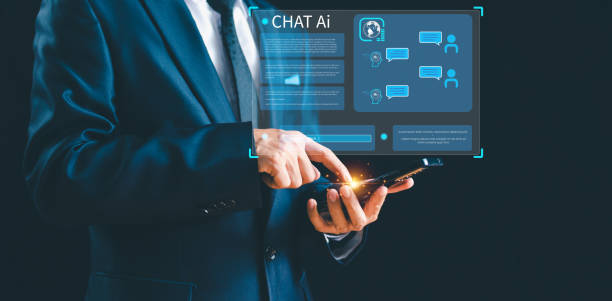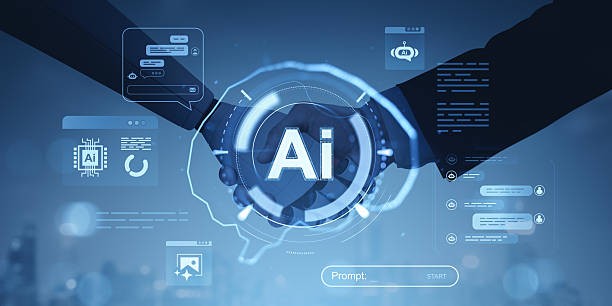Comprehensive Introduction to AI Robots
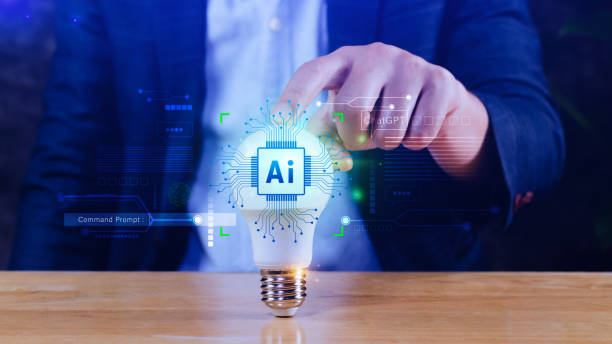
In today’s world, where technology is advancing at a dizzying pace, the concept of an #AI_robot is no longer confined to science fiction stories; it has become a tangible reality in our daily lives.
These #intelligent_systems, leveraging complex algorithms and machine learning capabilities, are able to perform tasks that were previously only within human capability.
From factory production lines to virtual assistants on mobile phones, the presence of an AI robot signifies a huge leap in automation and human-machine interaction.
The main goal of developing these robots is to increase efficiency, accuracy, and reduce human error.
They can analyze vast amounts of data, identify patterns, and make decisions based on them, abilities that are vital for many industries.
The evolution of an AI robot means entering an era where machines not only follow our commands but can also learn, adapt, and even exhibit creativity.
This immense potential also raises numerous questions, including the future of the workforce and ethical considerations.
However, it is clear that the benefits of this technology, if used responsibly, are vast.
This article explores various dimensions of this amazing phenomenon, from its history to its applications and challenges ahead, to provide a deeper understanding of the role of robotics and artificial intelligence in shaping the future.
An AI robot is not just a tool; it is a potential partner in solving the most complex human problems.
We are witnessing the emergence of a new generation of robots that, with their advanced capabilities, are pushing the boundaries of what is possible.
Don’t have a company website yet and missing out on online opportunities? With professional corporate website design by Rasav,
✅ Double your business’s credibility
✅ Attract new customers
⚡ Free consultation for your corporate website!
History and Evolution of Artificial Intelligence and Robotics
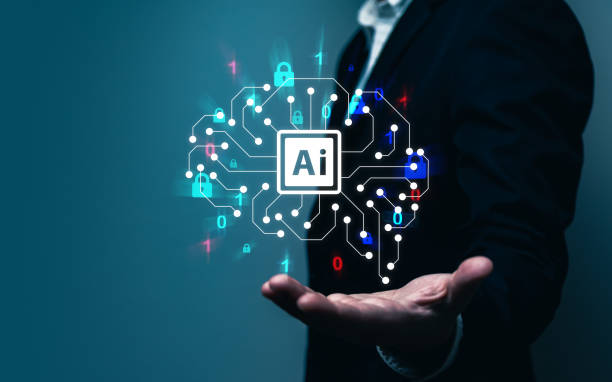
The history of #Artificial_Intelligence and #robotics is intertwined and full of important milestones that ultimately led to the emergence of today’s #AI_robot.
The roots of AI trace back to the early 20th century and even before, when philosophers and mathematicians pondered the idea of machines that could think.
But the real turning point began after World War II with the advent of electronic computers.
Concepts like the Turing Test in the 1950s shaped the effort to define and evaluate machine intelligence.
In the 60s and 70s, with the emergence of the first #industrial_robots and symbolic AI systems, this field entered its practical phase.
However, the “AI winter” period in the 80s and 90s indicated major challenges in fulfilling early promises.
But with advancements in computational power, access to vast data, and the development of new algorithms, especially in the fields of #machine_learning and #deep_learning, a new era of flourishing began.
These advancements paved the way for building an AI robot with much more advanced capabilities.
Now, we are witnessing robots that can navigate complex environments, recognize objects, and even interact naturally with humans.
Artificial Intelligence is the backbone of an intelligent robot’s performance, enabling it not only to perform repetitive tasks but also to learn from its experiences.
Novel Applications of AI Robots in Daily Life and Industry
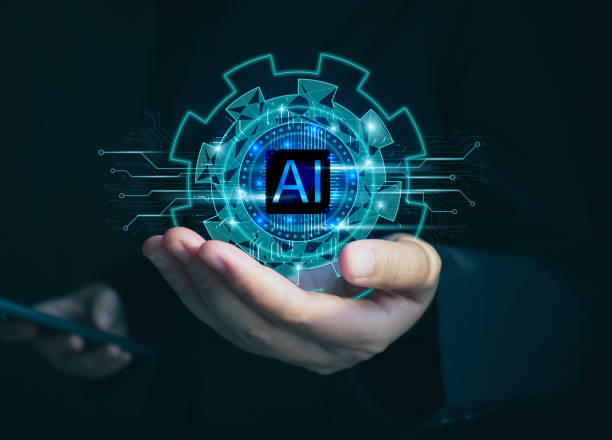
Today, the #AI_robot has become an inseparable part of daily life and the beating heart of many industries.
In the #medical field, surgical robots with their unparalleled precision have come to the aid of doctors, and nursing robots play an effective role in patient care.
In the #automotive and #manufacturing industries, industrial_robots, with their programmability and high precision, have significantly increased production speed and quality.
These robots not only perform repetitive tasks but are also capable of detecting defects and optimizing processes using machine vision and artificial intelligence.
In the #services sector, service robots in hotels and restaurants have taken on hospitality and cleaning duties, while logistics and warehouse robots improve supply chain efficiency.
Even at home, robotic vacuum cleaners and smart voice assistants are examples of the presence of #smart_robots in our personal lives.
AI robots in agriculture also significantly help increase productivity by monitoring crops, detecting diseases, and automating harvesting.
This wide range of applications demonstrates the boundless potential of this technology to solve complex problems and improve the quality of life.
Below, a table of the most important applications of these robots is provided.
| Sector | Example AI Robot Application | Description |
|---|---|---|
| Medicine and Healthcare | Surgical robots, nursing robots, drug delivery | Increased surgical precision, assistance in elderly care, drug delivery |
| Industry and Manufacturing | Assembly robots, quality inspection, welding | Production line automation, error reduction, speed increase |
| Logistics and Warehousing | Cargo handling robots, sorting, inventory management | Warehouse optimization, speeding up dispatch |
| Services and Daily Life | Cleaning robots, hospitality, home assistants | Ease of life, increased welfare, help with household chores |
| Agriculture | Harvesting robots, field monitoring, precise spraying | Increased productivity, reduced waste, sustainable agriculture |
Challenges and Ethical Considerations in the Development of Intelligent Robots
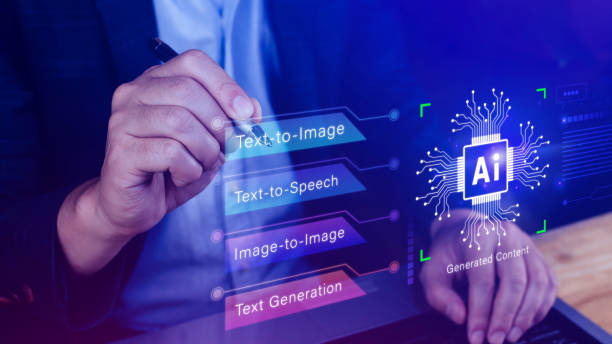
Despite the countless benefits of #AI_robots, their development and expansion also bring significant #ethical and #social challenges that require serious attention and discussion.
One of the main concerns is #job_displacement.
With the advancement of automation by advanced robots, many routine and repetitive jobs may be eliminated, leading to increased unemployment and social inequality.
This necessitates planning for workforce retraining and the creation of new jobs.
Another issue is #privacy and #data_security.
#Intelligent_robots, especially those operating in homes or public environments, collect and process large amounts of personal information.
This data can be misused or unintentionally disclosed, which has serious consequences for individual privacy.
Furthermore, the issue of #algorithmic_bias is very important; if the data used to train an AI robot contains racial, gender, or social biases, the robot will reflect these biases and can lead to unfair decisions.
Accountability for the actions of an #autonomous_robot is also a philosophical and legal dilemma.
If a robot causes an error or harm, who is responsible? The programmer, the manufacturer, or the robot itself? These questions require the formulation of clear laws and regulations.
Finally, concerns about the increasing autonomy of robots and the possibility of them going out of human control are also raised, although this topic is more speculative in nature.
These challenges indicate that the development of #intelligent_systems must be accompanied by a responsible approach, considering long-term social and ethical implications.
Does your current e-commerce website design lead to lost customers and sales?
Rasav is your solution with modern and user-friendly e-commerce website designs!
✅ Significant increase in conversion rates and sales
✅ Strong branding and customer trust-building
⚡ Get a free e-commerce website design consultation from Rasav!
Educational AI Robots and Their Role in the Future of Learning
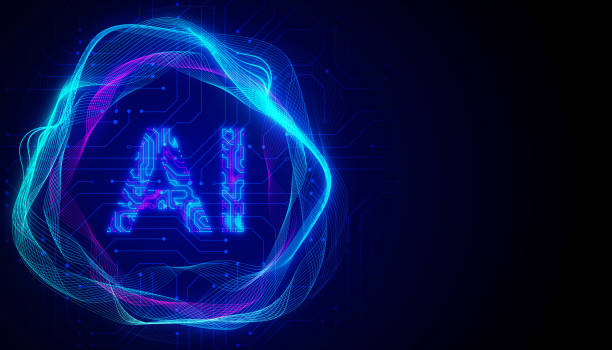
The #AI_robot in the field of #education has started a major revolution, and its role in the future of learning is increasing.
These robots are able to provide a #personalized learning experience tailored to the needs of each student.
An #intelligent_educational_robot can identify each individual’s strengths and weaknesses and provide appropriate educational content, exercises, and feedback.
This approach significantly increases learning efficiency.
Imagine a #robotic_teacher that can answer students’ questions anytime, anywhere, explain complex concepts with innovative methods, and even simulate practical skills.
These robots can act as #educational_assistants for teachers, help with classroom management, and reduce the burden of repetitive tasks such as grading or preparing lesson materials.
This gives teachers more opportunities to focus on human interactions and the creative aspects of education.
Additionally, an AI robot can provide access to quality education in underprivileged areas or for individuals with special needs.
They can act as language tutors, scientific simulators, or even #educational_playmates for children, turning learning into a fun and engaging process.
The potential of an #AI_robot in changing educational paradigms and creating dynamic and inclusive learning environments is enormous.
These robots not only transmit educational content but can also optimize teaching methods by analyzing learning data.
Educational robots can play a significant role in democratizing education.
An Analysis of the Future of Jobs and the Role of AI Robots in the Labor Market

The discussion about the #future_of_jobs and the impact of #AI_robots on the labor market is one of the hottest and most #controversial topics today.
On one hand, there are concerns about the #replacement_of_human_labor by intelligent robots, especially in jobs involving repetitive and rule-based tasks.
On the other hand, optimists believe that this technology will not only not destroy jobs but will also create new ones.
Research indicates that an #intelligent_robot is unlikely to eliminate jobs completely, but rather #transform them.
Routine and predictable tasks will be delegated to robots and AI systems, while humans will focus on tasks requiring creativity, critical thinking, emotional intelligence, and complex human interactions.
This means that the future workforce must #retrain their skills and adapt to the new requirements of the labor market.
The emergence of #AI_robots has also led to the creation of new jobs, such as robotics engineers, AI specialists, AI ethicists, and workforce retraining specialists.
Additionally, jobs requiring the supervision, maintenance, and improvement of intelligent systems will increase.
Therefore, instead of focusing on job destruction, we should focus on #job_evolution and the importance of #continuous_learning to adapt to these changes.
Society must prepare for this transition to ensure that the benefits of automation are distributed fairly and that no one is left behind.
Supporting Technologies for AI Robots
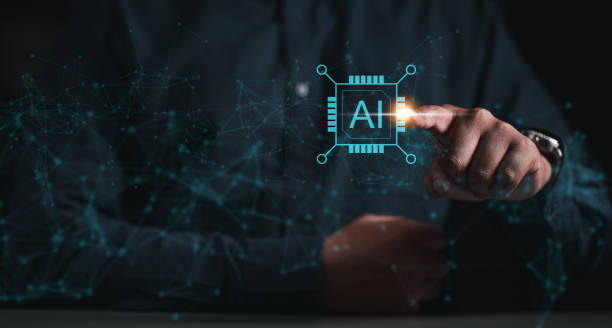
The advanced performance of every #AI_robot is due to significant advancements in several technological areas that act as its main pillars.
Understanding these supporting technologies is essential to comprehending how an #intelligent_robot functions and what its capabilities are.
One of the most important of these technologies is #Machine_Learning and its subset, #Deep_Learning.
These algorithms enable an AI robot to learn from data, identify patterns, and make decisions without explicit programming.
For example, in machine vision robots, deep learning allows the robot to recognize objects or identify faces.
#Computer_Vision is another key component that allows robots to “see” and “understand” their surroundings.
This involves processing images and videos to identify objects, locate positions, and even understand depth.
#Natural_Language_Processing (NLP) allows an #AI_robot to understand, generate, and communicate with humans more naturally.
This technology has wide applications in voice assistants and chat robots.
Robotics and Mechatronics also play a vital role in the physical aspect of an AI robot.
These sciences deal with the design, construction, and control of the mechanical components of a robot so that it can move, manipulate objects, and interact with the physical environment.
Additionally, #sensors and #actuators collect data from the environment and convert the robot’s commands into physical motion.
Below, a table of the most important supporting technologies is provided.
| Technology | Role in AI Robot | Application Example |
|---|---|---|
| Machine Learning / Deep Learning | Robot training from data, pattern recognition | Object detection, behavior prediction |
| Computer Vision | Visual understanding of environment, image recognition | Autonomous navigation, quality inspection |
| Natural Language Processing (NLP) | Understanding and generating human language | Voice assistants, customer service robots |
| Robotics and Mechatronics | Design and control of robot’s physical components | Movement, object grasping, physical interaction |
| Sensors and Actuators | Collecting data from environment and executing commands | Touch, temperature, pressure, physical movement |
Entertaining and Interactive AI Robots

Beyond industrial and service applications, #AI_robots have also gained a prominent presence in the realm of #entertainment and social interactions.
These robots, often designed with the goal of creating engaging and entertaining experiences, can play various roles.
Among these are #home_companion_robots that, with their ability to form emotional connections and perform simple tasks, act as companions for children, the elderly, and even pets.
These robots can tell stories, play games, and even mimic facial expressions to create a more realistic sense of companionship.
In the #video_game industry, artificial intelligence plays a vital role in creating intelligent non-player characters (NPCs) that exhibit realistic and challenging behaviors.
AI robots in this context make the gaming experience richer and more dynamic.
Furthermore, artistic and performance robots, leveraging AI, are capable of performing music, dancing, or even creating works of art that challenge the boundaries of machine creativity.
#Interactive_robots have also gained popularity in public environments, including guide robots in museums or shopping malls that can provide information and answer visitors’ questions.
The goal of these robots, beyond performing tasks, is to #create_a_positive_user_experience and interactivity.
Advances in #natural_language_processing and #emotional_state_recognition enable these robots to provide smarter and more empathetic responses.
The future of these robots promises devices that are not only entertaining but can also form meaningful relationships with humans and help improve our quality of life through recreation and companionship.
Social robots have great potential to change how we interact with technology.
Don’t have a company website yet and missing out on online opportunities? With professional corporate website design by Rasav,
✅ Double your business’s credibility
✅ Attract new customers
⚡ Free consultation for your corporate website!
Guide to Selecting and Utilizing the Right AI Robot

Selecting and utilizing the right #AI_robot for your specific needs, whether in a business environment or for personal use, requires careful consideration and #expert_guidance.
The first step is #defining_your_exact_needs and objectives for deploying the robot.
Do you need an industrial robot for a production line, a virtual assistant for managing administrative tasks, or perhaps a companion robot to assist the elderly?
After identifying your needs, you must pay attention to the robot’s #capabilities and #technical_specifications.
This includes data processing ability, computational power, sensor accuracy, movement capabilities, and level of automation.
It is important that the chosen robot can perform the desired tasks with high efficiency and reliability.
Furthermore, the robot’s #compatibility with your existing systems and IT infrastructure is highly important.
An AI robot should easily integrate with other software and hardware present in your environment.
#Data_security and #privacy are also vital considerations.
Ensure that the robot and its supporting systems have strong security protocols to protect sensitive information.
Also, consider the #technical_support and #after-sales_services provided by the robot’s vendor.
Any complex system may require maintenance and troubleshooting.
Finally, #budget and #hidden_costs, including installation, maintenance, and staff training, must also be considered.
Choosing the right #intelligent_robot can increase productivity and create new opportunities, but a wrong choice can lead to resource waste.
Choosing the right AI platform is a crucial step to success.
The Future Outlook of AI Robots and Beyond

The future of #AI_robots is a topic accompanied by both the most #question-provoking inquiries and the most exciting predictions.
Experts believe that in the coming decades, we will witness unprecedented growth in the capabilities of #intelligent_robots.
These advancements will manifest not only in enhancing current abilities but also in the emergence of entirely new generations of AI robots capable of learning and adapting at a much higher level.
One of the most anticipated leaps is the development of #Artificial_General_Intelligence (AGI), where an #intelligent_robot will be capable of understanding, learning, and applying knowledge across a wide range of tasks, just like a human.
This could lead to the emergence of robots that not only solve problems but can also set new goals for themselves and create plans to achieve them.
This potential opens up new horizons in science, medicine, space exploration, and beyond.
Also, human-AI robot interaction is expected to become much smoother and more natural, with robots capable of recognizing human emotions and providing empathetic responses.
This could lead to the development of more advanced companion robots, smart personal assistants, and even virtual family members.
However, with these advancements, ethical and social challenges will also become more complex.
Establishing robust legal and ethical frameworks to guide the development and deployment of #autonomous_robots is crucial.
The future of AI robots is a future of profound transformations that has the potential to change every aspect of our lives, from how we work and play to how we interact with each other and with the world around us.
The outlook for future robots is very exciting.
Frequently Asked Questions
| Question | Answer |
|---|---|
| What is an AI robot? | An AI Robot is a machine capable of understanding its environment, reasoning, learning, and making decisions to perform tasks autonomously. |
| What is the difference between regular robots and AI robots? | Regular robots perform repetitive tasks based on pre-programming, while AI robots can learn from experience, interact dynamically with their environment, and even behave in a manner resembling human intelligence. |
| What are the main applications of AI robots? | They are used in industries (manufacturing, assembly), medicine (surgery, diagnosis), services (customer support, domestic), exploration (space, underwater), and many other fields. |
| What technologies are used in building AI robots? | Machine Learning, Computer Vision, Natural Language Processing, Deep Learning, and Robotics are among the key technologies. |
| Can AI robots have emotions? | Currently, robots do not have emotions in the human sense. They can recognize and react to emotions, but they do not experience emotions themselves. |
| What are the main challenges in developing AI robots? | Safety, reliability, ethics, autonomy, adaptability to complex environments, and natural human interaction are important challenges. |
| How are AI robots trained? | They are usually trained using large volumes of data, machine learning algorithms, and deep learning to recognize patterns and make decisions. |
| Examples of AI robots in daily life? | Smart robotic vacuum cleaners, customer support chatbots, autonomous vehicles, and surgical robots in hospitals. |
| Are AI robots a threat to human jobs? | Some repetitive jobs may become automated, but at the same time, robots can increase productivity and create new jobs in the development, maintenance, and supervision of these systems. |
| How is the future of AI robots predicted? | They are expected to become smarter, more autonomous, and capable of performing more complex tasks, engaging in closer interaction with humans in various environments. |
And other services of Rasav Advertising Agency in the field of advertising
Smart Conversion Rate Optimization: A dedicated service for online growth based on SEO-driven content strategy.
Smart Custom Software: An effective tool for attracting customers with the help of SEO-driven content strategy.
Smart Brand Identity: Professional optimization for improving SEO ranking using real data.
Smart Social Media: A professional solution for analyzing customer behavior with a focus on intelligent data analysis.
Smart Advertorial: A combination of creativity and technology for analyzing customer behavior through user experience customization.
And over hundreds of other services in the field of internet advertising, advertising consultation, and organizational solutions
Internet Advertising | Advertising Strategy | Advertorial
Resources
The future of AI and life transformation AI robots and the future of our lives The impact of AI and robots on Iran’s future AI and robots shaping our future
💡 Rasav Afarin: Your business’s gateway to the fast-paced digital world! With our professional services, including fast and optimized website design, build a bright future for your brand.
📍 Tehran, Mirdamad Street, next to Bank Markazi, Southern Kazeroon Alley, Ramin Alley, No. 6

